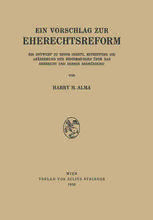
3DTV: Processing and Transmission of 3D Video Signals PDF
Preview 3DTV: Processing and Transmission of 3D Video Signals
3DTV 3DTV Processing and Transmission of 3D Video Signals Anil Fernando CVSSP,UniversityofSurrey,UK Stewart T. Worrall EricssonTelevision,UK Erhan Ekmekciogˇlu CVSSP,UniversityofSurrey,UK Thiseditionfirstpublished2013 ©2013JohnWiley&SonsLtd. Registeredoffice JohnWiley&SonsLtd,TheAtrium,SouthernGate,Chichester,WestSussex,PO198SQ, UnitedKingdom Fordetailsofourglobaleditorialoffices,forcustomerservicesandforinformationabouthow toapplyforpermissiontoreusethecopyrightmaterialinthisbookpleaseseeourwebsiteat www.wiley.com. Therightoftheauthortobeidentifiedastheauthorofthisworkhasbeenassertedin accordancewiththeCopyright,DesignsandPatentsAct1988. Allrightsreserved.Nopartofthispublicationmaybereproduced,storedinaretrievalsystem, ortransmitted,inanyformorbyanymeans,electronic,mechanical,photocopying,recording orotherwise,exceptaspermittedbytheUKCopyright,DesignsandPatentsAct1988,without thepriorpermissionofthepublisher. Wileyalsopublishesitsbooksinavarietyofelectronicformats.Somecontentthatappearsin printmaynotbeavailableinelectronicbooks. Designationsusedbycompaniestodistinguishtheirproductsareoftenclaimedastrademarks. Allbrandnamesandproductnamesusedinthisbookaretradenames,servicemarks, trademarksorregisteredtrademarksoftheirrespectiveowners.Thepublisherisnotassociated withanyproductorvendormentionedinthisbook. LimitofLiability/DisclaimerofWarranty:Whilethepublisherandauthorhaveusedtheirbest effortsinpreparingthisbook,theymakenorepresentationsorwarrantieswithrespecttothe accuracyorcompletenessofthecontentsofthisbookandspecificallydisclaimanyimplied warrantiesofmerchantabilityorfitnessforaparticularpurpose.Itissoldontheunderstanding thatthepublisherisnotengagedinrenderingprofessionalservicesandneitherthepublisher northeauthorshallbeliablefordamagesarisingherefrom.Ifprofessionaladviceorother expertassistanceisrequired,theservicesofacompetentprofessionalshouldbesought. LibraryofCongressCataloging-in-PublicationData Ekmekciogˇlu,Erhan. 3DTV:processingandtransmissionof3Dvideosignals/DrErhanEkmekciogˇlu, DrAnilFernando,DrStewartWorrall. 1onlineresource. Includesbibliographicalreferencesandindex. DescriptionbasedonprintversionrecordandCIPdataprovidedbypublisher; resourcenotviewed. ISBN978-1-118-70573-5(AdobePDF)–ISBN978-1-118-70648-0(ePub) ISBN978-1-118-70683-1(MobiPocket)–ISBN978-1-119-99732-0(cloth) 1.3-Dtelevision. I.Fernando,Anil. II.Worrall,Stewart. III.Title. TK6658 621.388–dc23 2013021021 AcataloguerecordforthisbookisavailablefromtheBritishLibrary. ISBN:978-1-119-99732-0 Setin10/12ptPalatinobyLaserwordsPrivateLimited,Chennai,India 1 2013 Contents Preface ix Acknowledgements xi ListofAbbreviations xiii 1 Introduction 1 1.1 Historyof3DVideo 2 1.1.1 3DintheNineteenthCentury 3 1.1.2 EarlyTwentieth-CenturyDevelopments 4 1.1.3 The1950s‘Golden’Period 6 1.1.4 The1980sRevivalandtheArrivalofIMAX 8 1.1.5 TheTwenty-first-CenturyRevival 12 1.1.6 Auto-Stereoscopic 13 1.1.7 3DTelevisionBroadcasts 14 1.2 3DVideoFormats 17 1.2.1 FrameCompatibleandServiceCompatible StereoscopicVideo 17 1.2.2 Colour-Plus-Depth 20 1.2.3 Multi-ViewVideo 22 1.2.4 Multi-ViewPlusDepthVideo 23 1.2.5 LayeredDepthVideo 23 1.3 3DVideoApplicationScenarios 25 1.3.1 3DTVBroadcastSystems 25 1.3.2 Mobile3DTV 26 1.3.3 3DVideoonDemand 27 1.3.4 3DImmersiveVideo-Conferencing 28 1.3.5 RemoteApplications 29 vi Contents 1.4 Motivation 29 1.5 OverviewoftheBook 30 References 31 2 CaptureandProcessing 34 2.1 3DSceneRepresentationFormatsandTechniques 34 2.2 3DVideoCapturingTechniques 36 2.2.1 CameraTechnologies 37 2.2.2 StereoscopicVideoCapture 39 2.2.3 Multi-ViewVideoCapture 45 2.2.4 IntegralImagingCapture 50 2.3 3DVideoProcessing 52 2.3.1 RectificationandColourCorrection 54 2.3.2 ExtractionofRangeImages 56 References 59 3 Compression 61 3.1 VideoCodingPrinciples 61 3.2 OverviewofTraditionalVideoCodingStandards 64 3.2.1 OverviewofMPEG-4Part10/H.264AVC Standard 65 3.2.2 HighEfficiencyVideoCoding(HEVC) 68 3.3 3DVideoCoding 71 3.3.1 StereoscopicVideoCoding 71 3.3.2 Multi-ViewVideoCoding 73 3.3.3 CodingofMulti-ViewPlusDepth 78 3.4 RecentTrendsin3DVideoCoding 84 3.4.1 3DVideowithAVC-BasedCodingTechnology 86 3.4.2 3DVideowithHEVC-BasedCodingTechnology 86 References 87 4 Transmission 91 4.1 Challengesof3DVideoTransmission 91 4.2 ErrorResilienceandConcealmentTechniques 91 4.2.1 Background 92 4.2.2 ErrorResilienceTools 93 4.2.3 ForwardErrorCorrection(FEC) 97 4.3 3DVideoTransmission:ExampleScenarios 98 4.3.1 3DVideoBroadcastoverDVB-T 98 4.3.2 3DVideoStreamingoverIPNetworks 102 4.3.3 3DVideoTransmissionoverMobileBroadband 105 4.4 Conclusion 121 References 121 Contents vii 5 Rendering,Adaptationand3DDisplays 123 5.1 WhyRendering? 123 5.2 3DVideoRendering 124 5.3 3DVideoAdaptation 135 5.3.1 ImportanceoftheDepthMapinAdaptation 135 5.3.2 ContextAdaptation 136 5.3.3 3DVideoAdaptationforMobileTerminals 136 5.3.4 Multi-ViewVideoAdaptation 138 5.4 3DDisplayTechnologies 140 5.4.1 AnaglyphicStereoscopicDisplays 141 5.4.2 PassiveStereoscopicDisplays 142 5.4.3 ActiveStereoscopicDisplays 143 5.4.4 Auto-StereoscopicDisplays 144 5.4.5 Light-FieldDisplay 146 References 148 6 QualityAssessment 150 6.1 2DVideoQualityMetrics 150 6.1.1 Peak-Signal-to-Noise-Ratio(PSNR) 151 6.1.2 StructuralSimilarityIndex(SSIM) 151 6.1.3 VideoQualityMetric(VQM) 151 6.2 3DVideoQuality 152 6.2.1 ImageQuality 153 6.2.2 VisualPerceptionofDepth 153 6.3 3DVideoQualityEvaluationMethods 159 6.3.1 SubjectiveandObjectiveQualityMeasurements 162 6.3.2 EffectsofColourTextureVideoandDepthMaps onPerceptualQuality 167 6.4 ModellingthePerceptualAttributesof3DVideo 168 6.4.1 ModellingtheImageQualityof3DVideo 169 6.4.2 ModellingtheDepthQualityof3DVideo 170 6.4.3 Compound3DVideoQualityModel 179 6.4.4 ApplicationoftheProposedQualityModels 182 6.4.5 ContextDependencyofVisualExperience 183 6.4.6 3D-SpecificTechnicalPropertiesthatAffect theViewingExperience 184 6.5 Conclusion 185 References 186 7 ConclusionsandtheFutureof3DTV 188 7.1 ChapterSummary 188 7.1.1 Chapter1:Introduction 188 7.1.2 Chapter2:CaptureandProcessing 189 viii Contents 7.1.3 Chapter3:Compression 189 7.1.4 Chapter4:Transmission 190 7.1.5 Chapter5:Renderingand3DDisplays 190 7.1.6 Chapter6:QualityAssessment 191 7.2 TheFutureof3DTV 191 7.2.1 UnderstandingofHuman3DPerception 191 7.2.2 DisplayTechnologies 192 7.2.3 ProductionApproachesandTechnologies 193 7.2.4 CompressionAlgorithms 195 7.2.5 LookingFurtherAhead 196 AppendixATestVideoSequences 197 A.1 2DVideoTestSequences 197 A.2 3DTestVideoSequences 198 AppendixBIntroductiontotheExperimentandQuestionnaire 200 B.1 IntroductiontotheExperiment 200 B.2 Questionnaire 203 Index 205 Preface Formorethan100years,thepopularityof3Dimageshaswaxedandwaned. Initialinterestinthemoreimmersiveexperiencethat3Dvideocanprovide has often been confounded by expensive production costs and headache- inducing problems in visual quality. During the last decade, 3D video has experiencedarevivalthathasprovedmoreenduringthanpreviousepisodes. Despitethesceptics,moviescontinuetobeproducedin3D,andmanynew televisions sold are capable of showing 3D video. This means that there is a large amount of 3D content available, and increasing numbers of 3D televisions in the home. All of this should create the best platform yet for 3DTVtobecomeasuccess,andhasledtobroadcastersputtingdedicated3D channelsintotheirmultiplexes. As one might expect, 3DTV introduces a number of new challenges compared to existing television production and broadcast scenarios. This book is intended to provide an introduction to the key concepts associated with 3DTV. It focuses on issues on the content creation side, delivery to the end-user, and how we measure the quality of 3D video. It also investigates display technologies. These are probably the most challenging areasassociatedwith3DTV. Contentcreationrepresentsasignificantchallenge,ascorrectlysettingup multiplecamerasischallenging.Thisisparticularlytrueforlivebroadcasts.If stereoscopicviewpointsareincorrectlyconfigured,viewerswillbesubjected to significant visual discomfort. If live broadcast is not required, then post- processingcanbeusedtoadjustviewpoints,andrefinethevisualexperience. Deliverytotheend-usercurrentlytakesplacebypackingtwostereoscopic views within a single frame. This is a relatively inexpensive method of providing 3DTV, as it is compatible with existing broadcast systems, and does not require significant additional bandwidth to be used. However, to deliveratrulyimmersiveexperienceformoreadvanceddisplays,morethan x Preface two views will need to be delivered to the end-user. This means that new coding techniques are required to reduce the bandwidth required by the multiple views. This book examines some of the compression approaches that may be used to reduce bandwidth requirements for multiple view transmission. Displaysplayaveryimportantroleinthe3DTVchain.Consumerequip- ment should be affordable, should provide a reasonable quality viewing experience, and should not give end-users headaches. We examine some differentdisplaytypeswithinthebook,lookingatsomeoftheiradvantages anddisadvantages. Finally,weexamineissuesassociatedwithmeasuringthequalityofvideo. Numerical metrics have often been used to measure the quality of video. These metrics are known to be far from perfect for 2D video. For 3D video it would seem to be even more important to think about how to measure quality.Chapter6inthisvolumeisdevotedtowhataffects3Dvisualquality, andhowitmaybemeasuredusingnumerical,objectiveapproaches. Acknowledgements We would like to thank the following academics and researchers, whose valuable research contributions at the University of Surrey, have helped informmuchofthewritingcontainedinthebook:ProfessorAhmetKondoz, Dr Lasith Yasakethu, Dr Varuna De Silva, Dr Safak Dogan, Dr Thushara Hewage,DrHemanthaAraachchi,DrGokceNur,DrOmarAbdul-Hameed, DrMartaMrak. Parts of the work presented throughout this book has been conducted within the European collaborative research projects DIOMEDES (Distribu- tion of Multi-view Entertainment using Content-Aware Delivery Systems), MUSCADE (Multimedia Scalable 3D for Europe) and ROMEO (Remote- Collaborative Real-time Multimedia Experience over the Future Internet). Wewouldliketothanktheresearcherswhoparticipatedinthesecollabora- tiveresearchprojectsfortheirvaluablecontributionstowardsobtainingthe presentedresearchresults.Inparticular,theauthorswouldliketoacknowl- edgethecontributionsdonebytheresearchersfromTechnicolor,France,in Chapter5ofthisbook.
